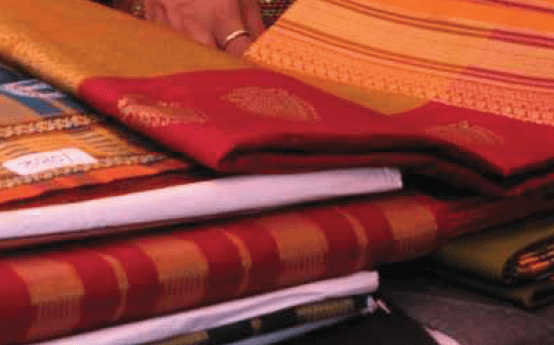The textile and garment sector in India is in a state of disarray that must be addressed. The industry, often considered as the second-highest job creator after agriculture, employs over 45 million people directly and another 60 million indirectly across the country.
The COVID-19 lockdown has had a significant impact on the silk industry in Bhagalpur, with weavers fighting for survival.
Bhagalpur, once a thriving silk fabric manufacturing center, is currently losing market share to newer centers like Ahmedabad and Bangalore. Craftsmen are under peril due to a lack of government assistance and increased competition.
The nearly 100-year-old silk weaving culture of Bhagalpur, which earned the district the moniker of “Silk City of Bihar,” is gradually fading. On the southern bank of the Ganges, a once-thriving business is now on the edge of “implosion,” leaving the existence of its craftspeople in the dark.
Due to two unplanned lockdowns imposed to control the spread of COVID-19, political apathy, mismanagement, and optics in the name of government schemes, the traditional source of livelihood of over 2 lakh people — who are engaged in spinning the yarn to weave the cloth — has now been reduced to around Rs 100 crore.
Weaving has historically been restricted to Scheduled Castes in Hindus, such as Tantis, and Other Backward Classes (OBCs) in Muslims, such as Ansaris, in Bhagalpur. Silk weaving has always been a household activity involving all family members. Weavers are not just confronting a financial crisis; newer generations are turning away from what they perceive to be a labor-intensive and unremunerative occupation.
Silk saris, stoles, scarves, dupattas, blankets, and clothing materials are all made in Bhagalpur.
With the passage of time, this artwork became caught in a slew of societal and governmental tentacles, dwindling the need for and appeal to Bhagalpuri work. This artwork returned with a boom after a relatively lengthy absence, energized with the desire to make it big in the garment work sector once more.
The government, as well as non-governmental organizations and businesses, took the initiative to bring this “lost” artwork back to the forefront of the competitive market, preserving its powerful quality and demand across the world. Today, this artwork has attracted many expert weavers and craftsman of all ages.
Silk is a luxury fabric, and nobody wants to spend so much money on it in today’s economy. Most of their business comes from firms situated in Europe or America. But there are no orders right now because logistics are a difficulty, and the business are suffering.
Every window and entrance in Nathnagar’s alleys, just big enough for one car to pass, opens to a loom that still sits proudly in the front room. Those looms are no longer active.
Weavers were already dealing with issues such as high yarn prices and a lack of dye availability in the local market. However, the informal sector was still operating. When the lockdown was declared last year, approximately 25,000 power looms and 4,000 handlooms in Bhagalpur went idle, causing thousands of households’ fortunes to suffer.
This artwork has traditionally competed with Bangalore and Mysore Silk. The quality and refinement of this cloth, on the other hand, stand out. This fabric is also environmentally beneficial, as there are not many silkworms in it.
Bhagalpuri silk is the fabric of choice at Delhi’s Wills India Fashion Week and Singapore Fashion Week. Due to the issues of logistics, traders are not being able to export the final products. With over 90% of loom owners having no work, the business is on the verge of collapse. The average monthly income from each loom has dipped from Rs 2,500-3,000 from Rs 5,500-6,000. The last order of dupattas made by a Guernsey based weaving firm has not been delivered for over two months the owner says.
Weavers in Bhagalpur are facing an acute crisis of capital. Lack of support from the government and increasing competition have put the craftsmen in jeopardy. Weavers claim they work for 18 hours on each product but earn a nominal sum, which is not enough to feed their families — forget about the good education of their children.

The weavers of Bhagalpur, in Bihar, have called for the government to launch various schemes and programmes for marketing of handloom products. These included easy access to raw materials at subsidized prices, easy credit flow at low interest rates and provision of better healthcare facilities and life insurance under welfare schemes. They also suggested infrastructure development, brand building, training and skill upgradation, infusion of new and contemporary designs through design intervention as well as product diversification.
Weavers need to be given higher wages to solve the capital problem, he said. Minimum Wages Act of the state government announced on October 1, 2018, says unskilled and semi-skilled weavers should get Rs 257 per day (Rs 6,682 every month) and Rs 268 per daily (Rs6,968 per month) respectively. The skilled, highly skilled should be given Rs 325 per day (Rs 8,450 per month), and Rs 396 per day (Rs 10,296 every month), according to the law.


